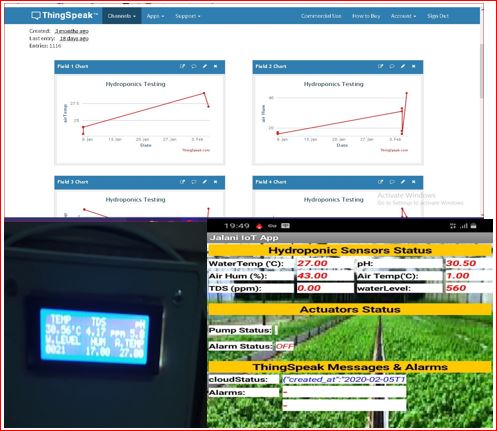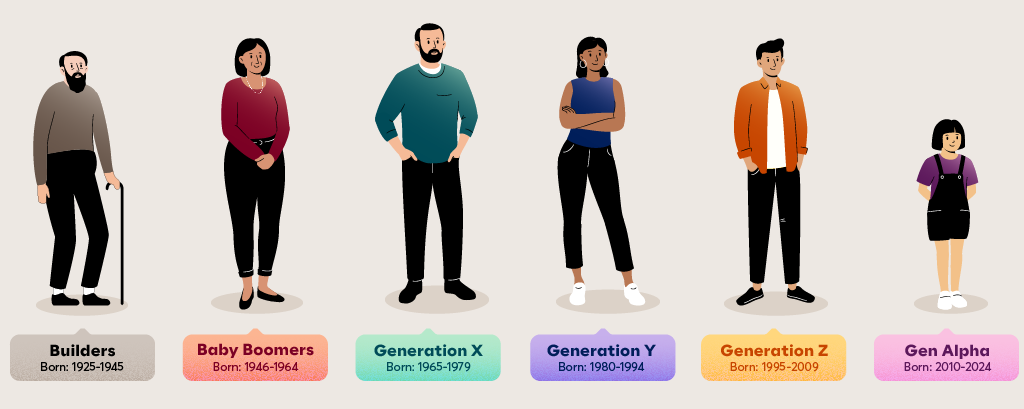
In today’s diverse workforce, understanding the unique characteristics and preferences made by the generational gap is crucial for fostering a harmonious and productive environment. From the disciplined and loyal Silent Generation to the ambitious and digital-native Gen Z, each cohort brings its own set of values, attitudes, and communication styles to the table. As a manager or HR professional, navigating these generational differences can be a daunting task, but it’s essential for unlocking the collective strengths of your team.
In this comprehensive guide, we’ll dive deep into the defining traits of Baby Boomers, Gen X, Millennials, and Gen Z, exploring how to effectively motivate and engage each group. We’ll also discuss the benefits of a multigenerational workforce and strategies for bridging the generational gap.
Understanding the Generations
The Builders Generation (Silent Generation) (1925-1945)
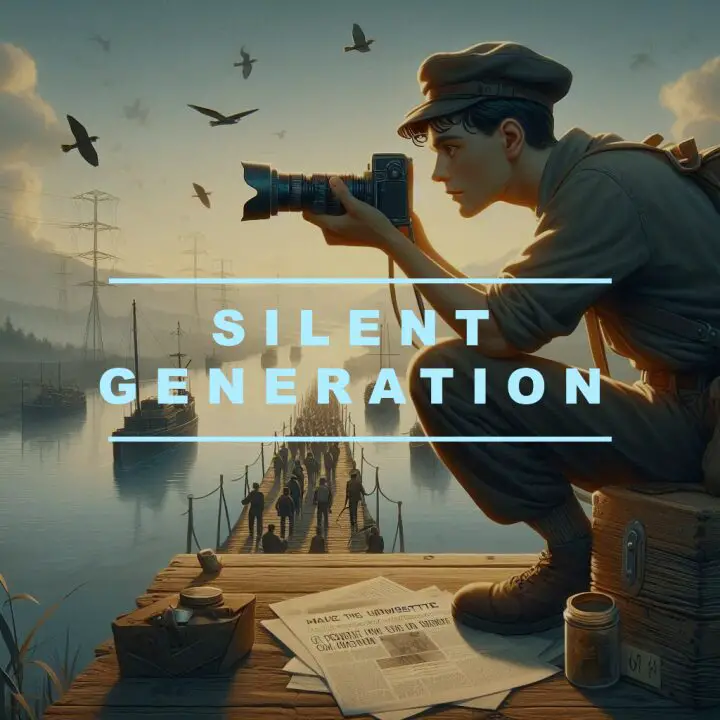
The silent generation are the generation that came of age during World War II and the subsequent post-war era.
Key characteristics of the Builders Generation include:
- Resilience and Hard Work: Having experienced the hardships of war and the Great Depression, this generation is known for their resilience, hard work, and determination.
- Patriotism and Duty: They were deeply patriotic and believed in the importance of duty and sacrifice for their country.
- Traditional Values: The Builders Generation is often associated with traditional values such as family, hard work, and respect for authority.
- Practicality: They were a practical generation, focused on getting things done and achieving tangible goals.
Some challenges faced by the Builders Generation include:
- Economic Hardship: Many experienced economic hardship during the Great Depression and war years.
- Social Change: They witnessed significant social changes during their lifetime, such as the civil rights movement and the women’s liberation movement.
- Aging: As they have aged, the Builders Generation has faced challenges related to healthcare, retirement, and social isolation.
Overall, the Builders Generation is a generation that shaped the world we live in today. Their experiences and values have had a lasting impact on society.
Baby Boomers (1946-1964)

Baby Boomers or just Boomers, named for the surge in births following World War II, are known for their strong work ethic, commitment, and self-sufficiency. Shaped by the social and political upheavals of the 1960s and 1970s, Boomers value direct communication and are often competitive due to the sheer size of their generation.
As the eldest members of today’s workforce, Boomers are motivated by traditional perks such as job titles, prestige, and retirement benefits. They thrive in hierarchical environments and prefer minimal feedback, assuming that everything is fine unless told otherwise.
Generation X (1965-1980)
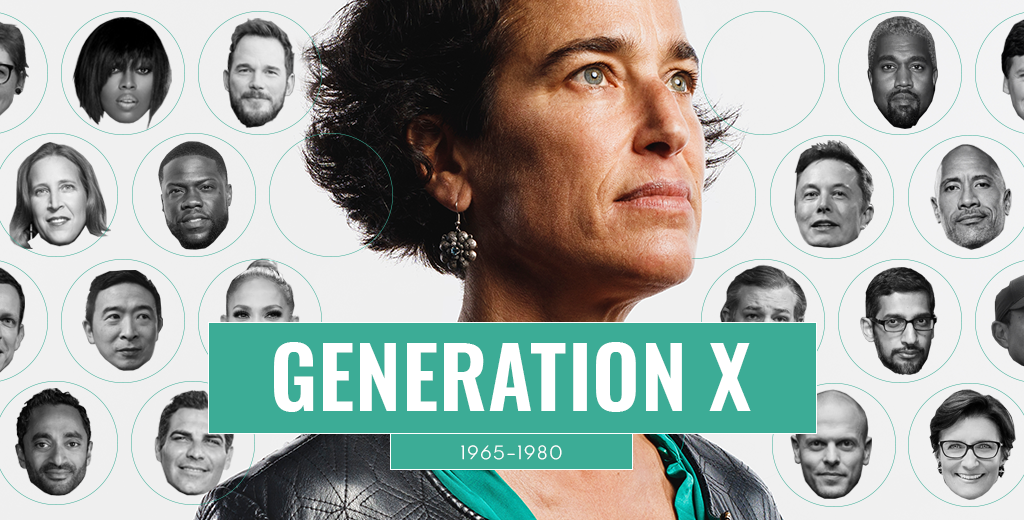
Generation X, sandwiched between the larger Boomer and Millennial generations, is often overlooked but brings a unique set of strengths to the workplace. Growing up during a time of rapid technological advancement, Gen Xers straddle both the digital and non-digital worlds, making them resourceful problem-solvers.
Gen Xers are known for their independent spirit and work-life balance. They value flexible schedules and telecommuting, having witnessed their parents’ dedication to work being undermined by economic downturns. Managers should focus on empowering Gen Xers to work autonomously while providing opportunities for growth and development.
Millennials (Generation Y) (1981-1996)

Millennials, or Generation Y, are the most studied and stereotyped generation in recent history. Often labeled as “lazy” or “entitled,” Millennials are actually confident, curious, and questioning of authority. As digital natives, they are self-sufficient and adept at using technology to solve problems.
Millennials are motivated by a sense of purpose and fulfillment in their work. They expect sincere corporate social responsibility and prioritize diversity and inclusion. Managers should focus on providing clear expectations, regular feedback, and opportunities for growth and development to keep Millennials engaged and motivated.
The Secret Weapon of Happy Couples: Unveiling the Power of Love Languages
Generation Z (1997-2009)

The newest generation to enter the workforce, Gen Z is ambitious, digital-native, and confident. Growing up in an “always on” technological environment, Gen Zers are accustomed to constant connectivity and on-demand entertainment and communication.
Gen Z shares many similarities with Millennials but stands out in their desire for financial stability and traditional incentives such as pay, bonuses, and healthcare coverage. They are also the most diverse generation yet, making diversity and inclusion a top priority. Managers should focus on providing clear career paths, mentorship opportunities, and a strong company culture to attract and retain Gen Z talent.

Gen Alpha: The Digital Natives
Gen Alpha, born roughly from 2010 to 2025, is the generation that follows Millennials and Gen Z. They are the first generation to be born entirely in the 21st century and have grown up in a world deeply integrated with technology.
Key characteristics of Gen Alpha include:
- Digital Natives: Gen Alpha has been exposed to technology from a very young age. They are comfortable with digital devices and have grown up using smartphones, tablets, and computers as a part of their daily lives.
- Hyper-connected: They are the most connected generation yet, with constant access to information and social media.
- Diverse and Inclusive: Gen Alpha is the most diverse generation in history, with a greater emphasis on inclusivity and acceptance of different cultures, backgrounds, and identities.
- Creativity and Innovation: Raised in a world of endless possibilities, Gen Alpha is often creative and innovative, with a desire to make a positive impact on the world.
- Short Attention Spans: Due to the fast-paced nature of digital media, Gen Alpha may have shorter attention spans compared to previous generations.
Some unique challenges faced by Gen Alpha include:
- Mental Health: The constant pressure to be connected and perform well can lead to mental health issues.
- Privacy Concerns: Growing up in a digital age raises concerns about privacy and data security.
- Information Overload: The abundance of information available online can make it difficult to discern fact from fiction.
Overall, Gen Alpha is a generation shaped by technology and with unique characteristics and challenges. Understanding their perspectives and experiences is crucial for navigating the future.
Receding Hairline 101: Causes, Solutions, and Tips for Prevention
Bridging the Generational Gap
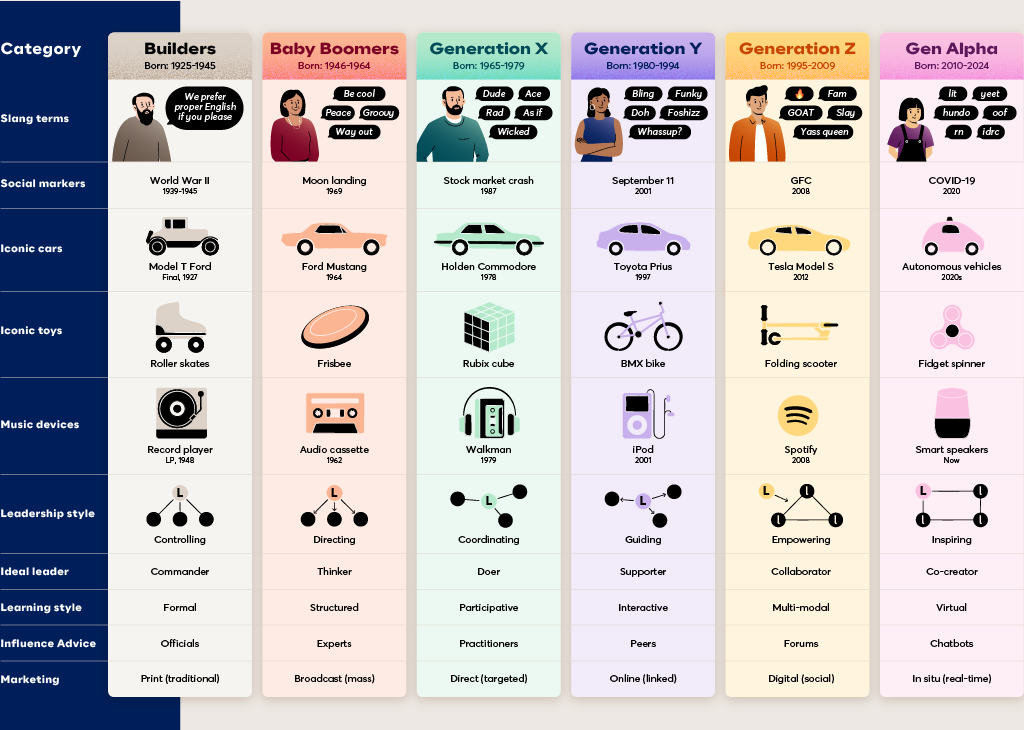
While generational differences may seem small, they can have a significant impact on workplace dynamics and productivity. Navigating these differences requires a multi-faceted approach that emphasizes communication, collaboration, and mutual understanding.
Communication Strategies

Effective communication is the foundation of a successful multigenerational workforce. Managers should adapt their communication style to suit the preferences of each generation, using a mix of in-person meetings, email, and instant messaging.
Baby Boomers and Gen Xers often prefer direct communication and face-to-face interactions, while Millennials and Gen Zers are more comfortable with digital communication. Managers should be mindful of these preferences and find a balance that works for their team.
Also read; These Video Games Give You the Freedom to Do Almost Anything
Collaboration and Mentorship
Fostering collaboration and mentorship opportunities can help bridge the generational gap and promote knowledge sharing. Pairing younger employees with more experienced colleagues can create a win-win situation, where younger workers gain valuable insights and older workers learn about new technologies and approaches.
Managers should also encourage cross-generational collaboration on projects, allowing team members to learn from each other’s strengths and experiences. This not only promotes a sense of unity but also leads to more innovative solutions.
Also Read Tricks to Enable Playing High-end Games on a Low-end PC
Embracing Diversity

A multigenerational workforce is a microcosm of the broader diversity that exists in society. By embracing this diversity and creating an inclusive environment, managers can unlock the collective strengths of their team and foster a sense of belonging for all employees.
Managers should be mindful of generational stereotypes and avoid making assumptions about an employee’s abilities or preferences based on their age. Instead, they should focus on each individual’s unique skills, experiences, and potential contributions to the team.
The Benefits of a Multigenerational Workforce

While navigating generational differences can be challenging, the benefits of a multigenerational workforce far outweigh the drawbacks. By harnessing the collective strengths of different generations, organizations can gain a competitive edge in today’s fast-paced business environment.
Increased Innovation and Problem-Solving
A diverse workforce brings together a wide range of perspectives, experiences, and problem-solving approaches. By encouraging collaboration and knowledge sharing, managers can tap into this diversity and foster a culture of innovation.
Gen Xers and Millennials, in particular, are known for their resourcefulness and ability to think outside the box. By working alongside more experienced colleagues, they can learn from their wisdom while bringing fresh ideas to the table.
Enhanced Customer Service and Engagement
A multigenerational workforce can also improve customer service and engagement by reflecting the diversity of the customer base. Employees from different generations can relate to customers of all ages and backgrounds, providing a more personalized and empathetic experience.
Moreover, younger generations bring a deep understanding of emerging technologies and digital communication channels, which can help organizations stay relevant and competitive in an increasingly digital world.
Improved Knowledge Transfer and Succession Planning
As Baby Boomers begin to retire in large numbers, organizations are facing a knowledge gap that threatens their long-term success. A multigenerational workforce can help mitigate this risk by facilitating knowledge transfer from experienced workers to younger employees.
Mentorship programs and job shadowing opportunities can help ensure that critical knowledge and skills are passed down to the next generation of leaders. This not only ensures business continuity but also helps younger employees feel valued and invested in the organization’s future.

Conclusion
In today’s diverse and rapidly evolving workforce, understanding and embracing differences made by the generational gap is essential for success. By adapting communication strategies, fostering collaboration and mentorship, and creating an inclusive environment, managers can unlock the collective strengths of their team and drive innovation and growth.
As the workforce continues to evolve, with Gen Z entering the scene and Gen Alpha on the horizon, it’s crucial for organizations to stay ahead of the curve and adapt to the changing needs and preferences of each generation. By embracing the benefits of a multigenerational workforce and investing in their employees’ growth and development, organizations can build a strong and resilient workforce that is poised for success in the years to come.
FAQs
Sure! Here are the answers to the FAQs related to the article on generational differences in the workforce:
1. What are the key characteristics of each generation in the workforce?
- Baby Boomers (1946-1964): Known for their strong work ethic, loyalty, and commitment to their jobs. They value job security, traditional benefits, and face-to-face communication.
- Generation X (1965-1980): Independent and resourceful, Gen Xers prioritize work-life balance and flexibility. They are adaptable to change and value autonomy in their work.
- Millennials (1981-1996): Often seen as confident and tech-savvy, Millennials seek purpose and fulfillment in their careers. They value diversity, inclusion, and regular feedback from their employers.
- Generation Z (1997-2012): The most digitally native generation, Gen Z is ambitious and values financial stability. They prioritize mental health, diversity, and clear career paths in the workplace.
2. How can managers effectively communicate with different generations?
Managers can enhance communication by tailoring their approach to suit each generation’s preferences:
- Baby Boomers: Use direct, face-to-face communication and provide clear instructions. They appreciate personal interactions and formal meetings.
- Generation X: Offer a mix of in-person and digital communication. They value straightforwardness and appreciate when managers respect their time.
- Millennials: Utilize digital platforms for communication, such as instant messaging and collaborative tools. Regular feedback and recognition are important for keeping them engaged.
- Generation Z: Embrace social media and digital communication channels. They appreciate quick responses and transparency, so maintaining an open dialogue is key.
3. What are the benefits of a multigenerational workforce?
A multigenerational workforce offers several advantages:
- Diverse Perspectives: Different generations bring unique viewpoints and problem-solving approaches, fostering creativity and innovation.
- Enhanced Customer Service: A diverse team can better relate to a varied customer base, improving customer satisfaction and engagement.
- Knowledge Transfer: Experienced employees can mentor younger workers, ensuring that valuable skills and knowledge are passed down.
- Increased Employee Engagement: A collaborative environment that values contributions from all generations can boost morale and job satisfaction.
4. How can organizations bridge the generational gap and promote collaboration?
Organizations can bridge the generational gap by implementing the following strategies:
- Mentorship Programs: Pair younger employees with experienced mentors to facilitate knowledge sharing and professional development.
- Cross-Generational Teams: Encourage collaboration on projects that involve members from different generations, allowing them to learn from each other.
- Inclusive Culture: Foster an inclusive workplace where all voices are heard and valued, regardless of age.
- Flexible Work Arrangements: Offer options like remote work and flexible hours to accommodate the varying needs of different generations.
5. What strategies can managers use to attract and retain talent from different generations?
To attract and retain talent from various generations, managers can:
- Offer Competitive Benefits: Provide a mix of traditional benefits (like retirement plans) and modern perks (like wellness programs and flexible schedules) to appeal to all age groups.
- Create a Positive Work Environment: Foster a culture of respect, collaboration, and inclusivity to make all employees feel valued.
- Provide Growth Opportunities: Offer training, development programs, and clear career paths to engage employees and support their professional growth.
- Emphasize Work-Life Balance: Recognize the importance of work-life balance for all generations and implement policies that support it, such as flexible hours and remote work options.
By understanding and addressing the unique needs and preferences of each generation, organizations can create a thriving, engaged workforce that is well-equipped to meet the challenges of the future.
